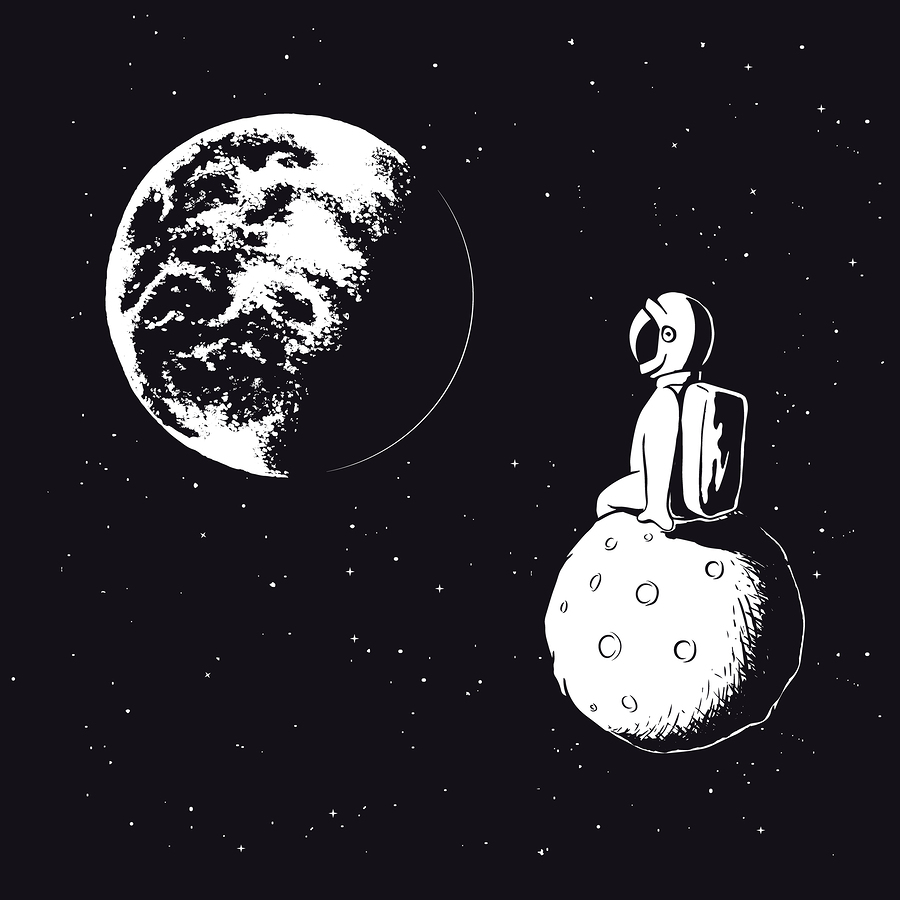The Moon, which had its hour of glory during the Cold War, seems to be back in fashion, after having been shunned for nearly two decades. Today, Asians are not hiding their ambitions to conquer our natural satellite both for scientific and economic reasons with, in the background, political stakes.
Great challenges for China
Quietly but surely, China is tracing its way towards exploration of the Moon. Since December 2013, a Chinese astromobile, named Yutu, has been broadcasting from the moon for 31 months. Five years later, in 2018, there are no less than forty launches planned, including two which will be widely tracked – those of the Chang’e 4 mission, whose objective is to explore the hidden face of the moon. The first, on May 20, 2018, sent a 425 kg communication relay satellite called Queqiao to a location 60,000 km above the moon. The second, planned for the end of 2018, will have the goal of landing a rover to carry out various missions. From a geological point of view, the device will study the characteristics of the moon’s hidden face (craters, volcanic activity) and conduct experiments related to possibilities of crops (silkworm, potatoes). On another note, the special electromagnetic environment of the moon (not disturbed by artificial terrestrial signals) will make it an ideal playground for the study of low frequency raidio. Finally, this lunar exploration will permit the study of a light non-radioactive gas found in abundance: helium 3 which, according to Ouyang Ziyuan (scientific head of the Chinese program), could meet “the energy needs of humanity for at least 10,000 years”.
The moon or the theatre of a war between two blocs
Recently, an article in Financial Times mentioned a joint project between Japan and India to explore the moon’s polar regions, a project that is expected to be officially announced by March 2019. Such a program is, from a political point of view, an unequivacal response by Japan and India (the 3rd and 5th larges global economic powers respectively in 2018) to the Chinese effort to isolate these two potential competitors. In parallel, the two countries are conducting their own program as shown by the project worked on by the Japanese Space Exploration Agency to send men to the moon in 2025 and India’s ambition, as part of its Chandrayaan-2 mission to send an orbiter, lander and rover to the moon, after the 2008 success of the Chandrayaan-1 mission. Concretely, India will use one of its most powerful rockets – the GSLV Mk II – to transport this 100% Indian equipment to an altitude of 100 km above the moon, and then the lander will descent to its south pole and its rover – equipped with solar panels – will explore an area of close to 200 m2, partly piloted from earth. Its mission will be to study the soil, minerals and exosphere, and identify possible traces of water. Ultimately, the United States is not far behind these emerging countries. Indeed, our neighbours to the south aim to create a support base in the context of conquering Mars – with an inhabited mission in 2023 – which could even be akin to a service station if the production of fuel proves possible.
The current lunar projects, each more ambitious than the others, are dictated by scientific and economic stakes, and not only that … Is the real primary reason that explains such government challenges being launched not also political and geostrategic?
